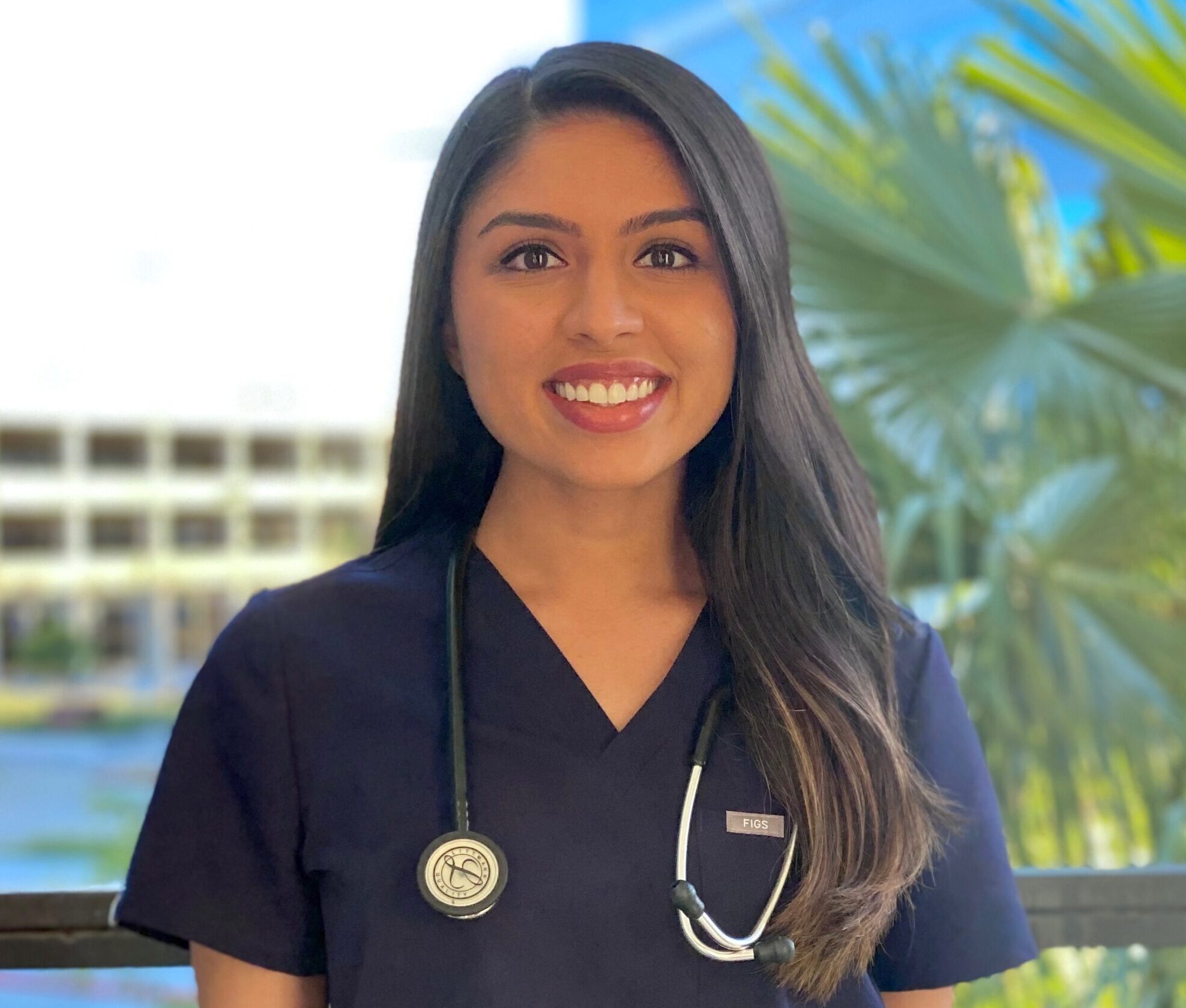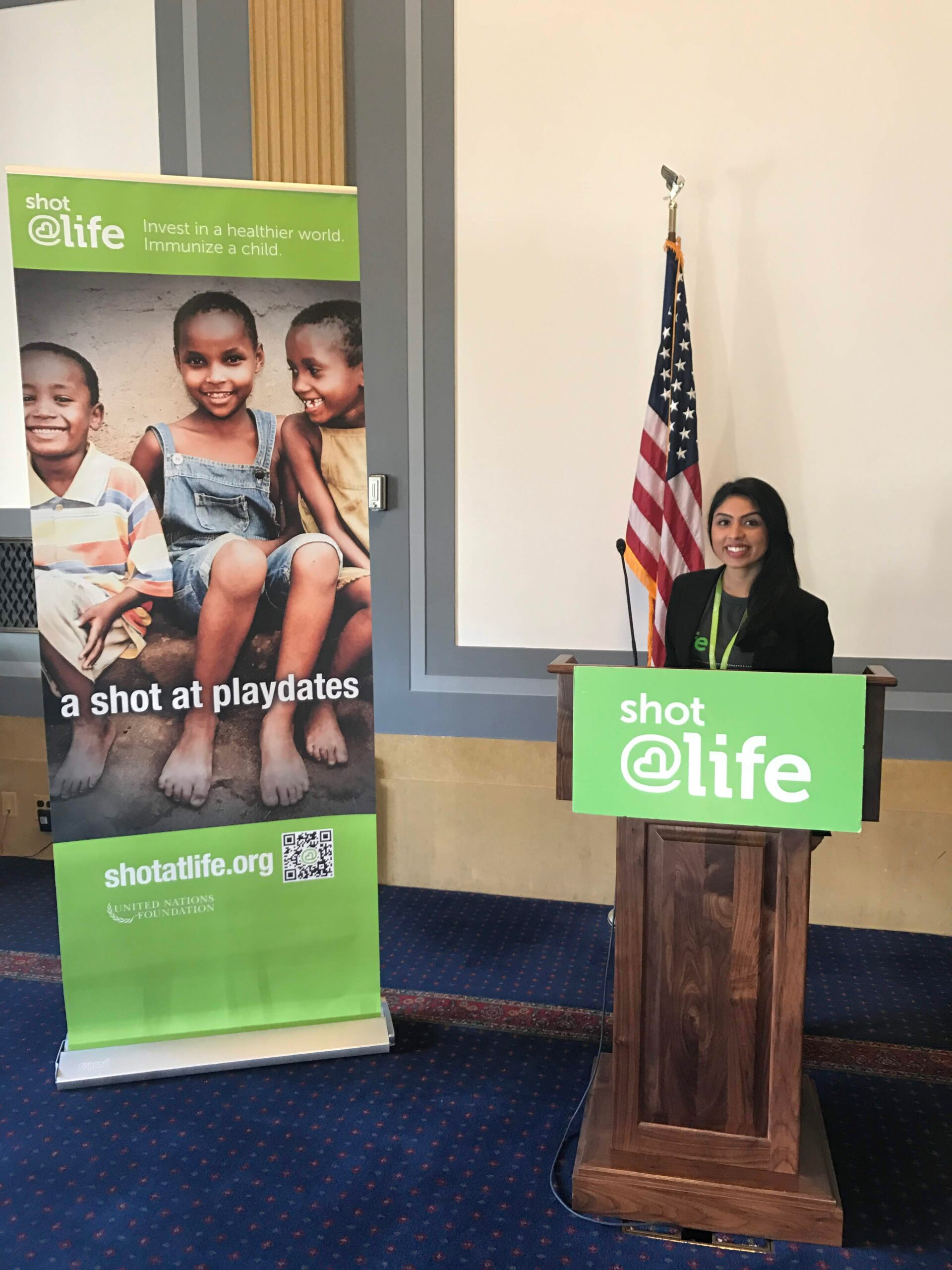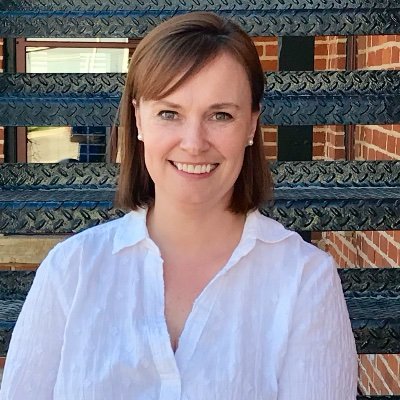Champion Spotlight: Aashna Patel
While earning a dual degree pursuing medical school and a master's degree in public health at Harvard University, Aashna Patel works to advocate for a global immunization program as a champion for Shot@Life.

Can you tell us about your educational path?
During my undergraduate career, I studied public health, which is when I first got involved with Shot@Life. A friend who was familiar with the campaign reached out to say that she thought it would align with my career goals and told me about the Shot@Life Summit. I planned to attend medical school, and I also knew that I wanted to tie the public health component into my clinical practice. Attending that first Summit event helped me see I could get both my medical degree and a master’s in public health (MPH). I chose the University of California, Irvine School of Medicine, and in between the third and fourth years of medical school, they allow you to get an MPH. You can do your MPH at any school, so I’m currently attending Harvard T.H. Chan School of Public Health in Boston, where I’ve connected with amazing classmates, professors, and mentors.
How does your education influence your vaccine advocacy?
It makes the journey more meaningful. In medical school, you’re focused on treating those individuals in front of you, but it’s also important to be fighting the larger systemic issues. I’ve learned about what is and what is not preventable and how vaccines are tangible, manageable ways to prevent diseases. I’m reminded that we have the privilege and the power to do something for our patients on several levels. What I’m learning also reinforces the importance of making sure our efforts are sustainable and that we empower people.
You’ve been with Shot@Life for five years and are currently busy earning multiple graduate degrees. What is it that keeps you working to improve global access to vaccines despite having a very full schedule?
Being a Shot@Life champion is an easy, yet effective way to make an impact with a sustainable, community-based effort. I came to the campaign as an undergraduate when I was figuring out my interests and passions and what I want to do. Shot@Life serves as a pillar of why I wanted to go into public health and advocacy as a career.
I want to stay involved long-term. It can be hard in medical school, but it is possible because it’s a high-impact commitment that doesn’t take too much time. I took a break from attending the Summit during 2020 and 2021 due to medical school exams and my rotation schedule, but I was able to return this year. I appreciate that you can choose to get more involved whenever you can.
Do you have a favorite Shot@Life memory?
The adrenaline on the morning of Hill Day as you prepare to go into meetings was my favorite part of the Summit. The whole day was very exciting and inspiring. It’s nice meeting people from different constituencies. Hearing the amazing experiences that other advocates bring to the table really helped me realize how much people can do. It contributed to me pursuing my MPH and incorporating advocacy into my career.
You have been a champion both as a resident of Illinois and now as a California resident. Any advice for fellow champions who may be moving and/or changing their voter registration?
I’ve lived in three different states while I’ve been a champion, and the overall mission of the organization doesn’t change. The ideologies can vary regionally, but you are still working alongside peers that have the same goal. You have to do a little homework on your officials. That’s true even if you are moving within the same state, or if your district changes, or after elections. When you have a new representative, you need to learn about them.
What are your favorite actions to take during advocacy pushes like Activate to Vaccinate or Mobilize to Immunize?
I really look forward to the meetings because you can play a super active role in advocating. It’s fun to meet people from around the state and use a team-based approach.
What would you tell someone thinking of becoming a Shot@Life advocate?
Definitely do it! It’s a low commitment but very impactful.

Want to join Aashna and other students working to improve global health and make the world a more equitable place? Learn more about how to get involved here!

